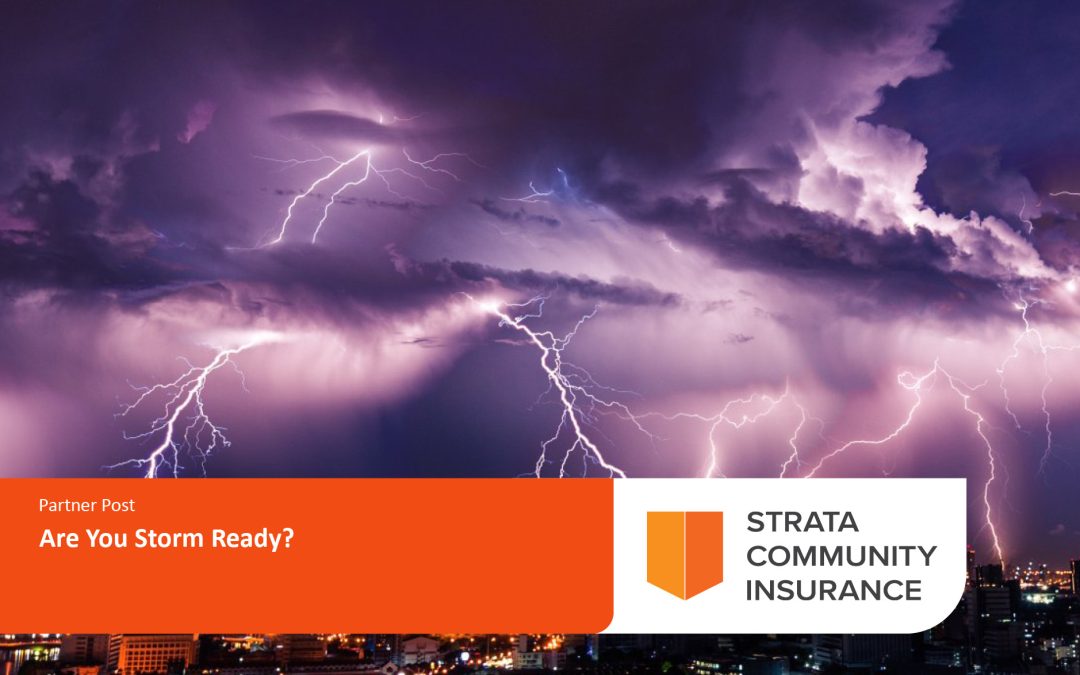A storm emergency plan for strata communities.
Understanding your insurance policy is crucial to ensuring your building is adequately protected against all weather-related events. Conduct a thorough risk assessment with your Body Corporate Manager to ensure your Building Sum Insured covers the full replacement value of your strata building.
In Queensland, a valuation for insurance purposes is required at least every five years to remain compliant.
Be Prepared
Preparation is key to mitigating the impact of storms. Start by familiarising yourself with your local council’s flood emergency plan and develop an evacuation strategy. This should include identifying the safest exits, meeting spots, and the best method of communication.
Ensure that all windows and doors are properly sealed and secure to prevent water ingress. Determine which room in your home is the strongest to shelter in during storms and cyclones and know how to turn off the main supply for water, electricity, and gas.
Prepare an emergency kit containing essential items such as non-perishable food, water, flashlights, batteries, a first-aid kit, and necessary medications.
Digital copies of important documents like insurance policies, identification, and property records should be made and stored in a secure, waterproof location or in cloud storage.
Common Areas
The Body Corporate must ensure that all common areas are well-maintained and adhere to state and local government safety regulations.
Regular maintenance of the roof is essential to prevent leaks during heavy rainfall and high winds. Gutters, downpipes, and drains should be kept clear of any debris to allow for proper water drainage.
Trees and shrubs that overhang property or threaten powerlines should be trimmed, and any dead trees or branches removed.
Outdoor items on your balcony and in common areas including furniture, pot plants, rubbish bins, and trampolines should be secured or stored to prevent them from being picked up by high winds and causing damage.
Other Considerations
Help to protect electronic devices from power surges by using surge protectors or installing an uninterrupted power supply unit (UPS).
Consider investing in a generator to provide backup power during extended outages.
It’s also a good idea to keep a list of emergency contact numbers handy, just in case.
After a Storm
After a storm, take time to check in with other residents to see if they are okay.
Document any building damage, inside and out, and be specific when recording where the damage is. For example, Unit 4 has ceiling damage in bedroom 2.
It is typically best for the owner or the body corporate committee to discuss the claim with their strata manager or broker initially. Strata Community Insurance will then work with you and your strata manager or broker through the claims process. Calling on our extensive strength of experience, this process is the most efficient use of everyone’s time and expertise.
Emergency Contact Numbers:
- Queensland State Emergency Service (SES): 132 500
- Updates and detailed information: Queensland Fire and Emergency Services
- Life-Threatening Emergency: 000
Being storm-ready involves careful planning and proactive measures. By following this guide, strata communities can better protect themselves and their properties from the potential ravages of severe weather.
To learn more about how Hartley’s Body Corporate Management team can assist you with your insurance needs, please contact your <Hartley’s Strata Manager>. For more information on Strata Living and navigating the complexities of strata insurance, please visit our free Strata Toolkit: here.
